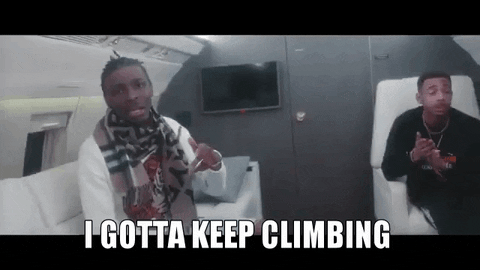
Good Day, and welcome to The Growth Compass!
⚠Reminder: We have given all subscribers access to our FREE Growth Compass Library that you can access HERE.

Here’s Where We Are Headed Today:
Mike Shanahan’s Message to His Son After Losing the Super Bowl
How to Think Through Failure Before It Happens
Favorite Posts I Found This Week
Free Mental Fitness Links 👇
☁ Mike Shanahan’s Message to His Son (Kyle) After Losing the Super Bowl
“You keep fighting. That’s (f***ing) life. I don’t care what job you’ve got, when things happen - you’ve got to fight through it. You want to get to the mountain top, what? You’re going to feel sorry for yourself? F that! You get back up and you keep climbing.”

Feeling Off Lately? Try One Week of Therapy, Free
Life can be overwhelming, but getting support shouldn’t be. This May for Mental Health Awareness Month, BetterHelp is offering one week of therapy completely free, so you can experience what real support feels like—no cost, no pressure.
You’ll be matched with a licensed therapist in as little as 24 hours, and connect on your schedule—by phone, video, or chat. With 35,000+ professionals, there’s someone for you. 94% of BetterHelp users report feeling better after starting therapy, and now you can try it yourself, risk-free.
Think Through Failure Before It Happens
Too many times, I’ve seen parents try to steal the struggle for their kids before failure happens. The greatest thing you can do for yourself, your team, and your family is to teach them how to adapt and prepare for challenges before they occur. Because there will be high pressure situations and new challenges that always arise. So today, we are going to talk about the topic of “presilience.”

What you need to know: Presilience is the ability to anticipate challenges and prepare yourself to handle them effectively before they happen. It combines resilience (the ability to recover from setbacks) with foresight (the ability to predict potential obstacles). This proactive mindset ensures you’re ready to face difficulties with confidence and clarity.
Instead of waiting for adversity to strike and reacting to it, presilience encourages you to plan ahead. It’s not about avoiding failure - because failure is inevitable - but about being prepared to manage it effectively and learn from it.
Why it matters: It’s about being prepared and adaptable. Coaches and athletes face immense pressure to perform under uncertain conditions, and presilience equips them with tools to handle these challenges. It reduces stress, enhances decision-making, and builds confidence in high-pressure situations.
Two Effective Tools to Build Presilience:
WOOP - Developed by Dr. Gabrielle Oettingen, WOOP stands for Wish, Outcome, Obstacle, Plan. It’s a science-backed method for achieving goals and preparing for obstacles. Here’s how it works:
Wish: Define a clear and specific goal.
Outcome: Imagine the best possible result if you succeed.
Obstacle: Identify potential challenges that might arise.
Plan: Develop a concrete plan to overcome those obstacles.
WOOP is effective because it combines positive visualization with realistic planning. Research shows that people using WOOP are 26% more likely to achieve their goals compared to those relying on traditional goal-setting techniques. By acknowledging potential difficulties, you can mentally rehearse your responses and reduce anxiety about failure.
A pre-mortem is a proactive planning technique used in business and sports. It involves imagining a future scenario where a project or performance has failed and brainstorming reasons for that failure. For instance, a coach might ask, “If we lose the championship, what will have caused it?”
This process helps teams:
Identify weaknesses in their strategy
Address potential risks before they escalate
Encourage collaboration by involving everyone in identifying solutions
Pre-mortems are particularly valuable because they shift the focus from blaming to problem-solving.

Five Presilience Questions to Ask Before a Big Event, Performance, or Presentation:
What is my main goal for this event, and how will I measure success?
What challenges or obstacles will I face, and how will I prepare for them?
How do I want to feel going into this moment, and what will I do to create that mindset?
What steps can I take to stay focused if things don’t go as planned?
How will I learn from this experience, regardless of the outcome?
Bottom Line: Presilience is about readiness and adaptability. By combining tools like WOOP and pre-mortems with self-awareness and proactive planning, you can face challenges head-on. In today’s unpredictable world, presilience empowers you to turn potential setbacks into opportunities for success.
Favorite Posts I Found This Week
Free Mental Fitness Links 👇
For Athletes and Performers:
For Coaches and Leaders:
That's a wrap for today. If you want to spread the joy, make sure to refer the newsletter to someone you think would benefit!
What'd you think of today's edition?
What I am reading and listening to:
Want More?
Feel free to view all of our FREE resources online here and our growing content library!
Interesting in advertising? Fill out this survey and we’ll get back to you soon!



